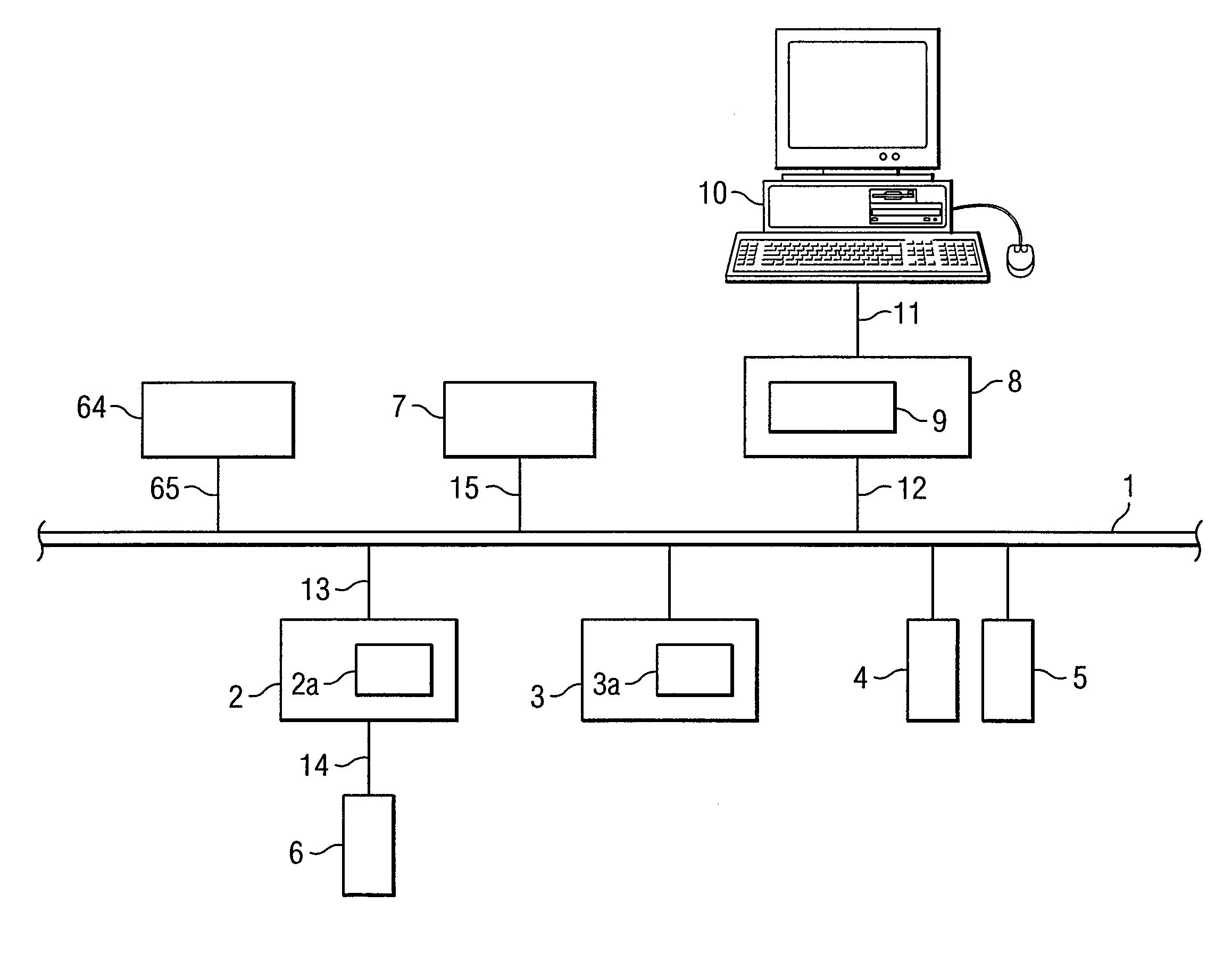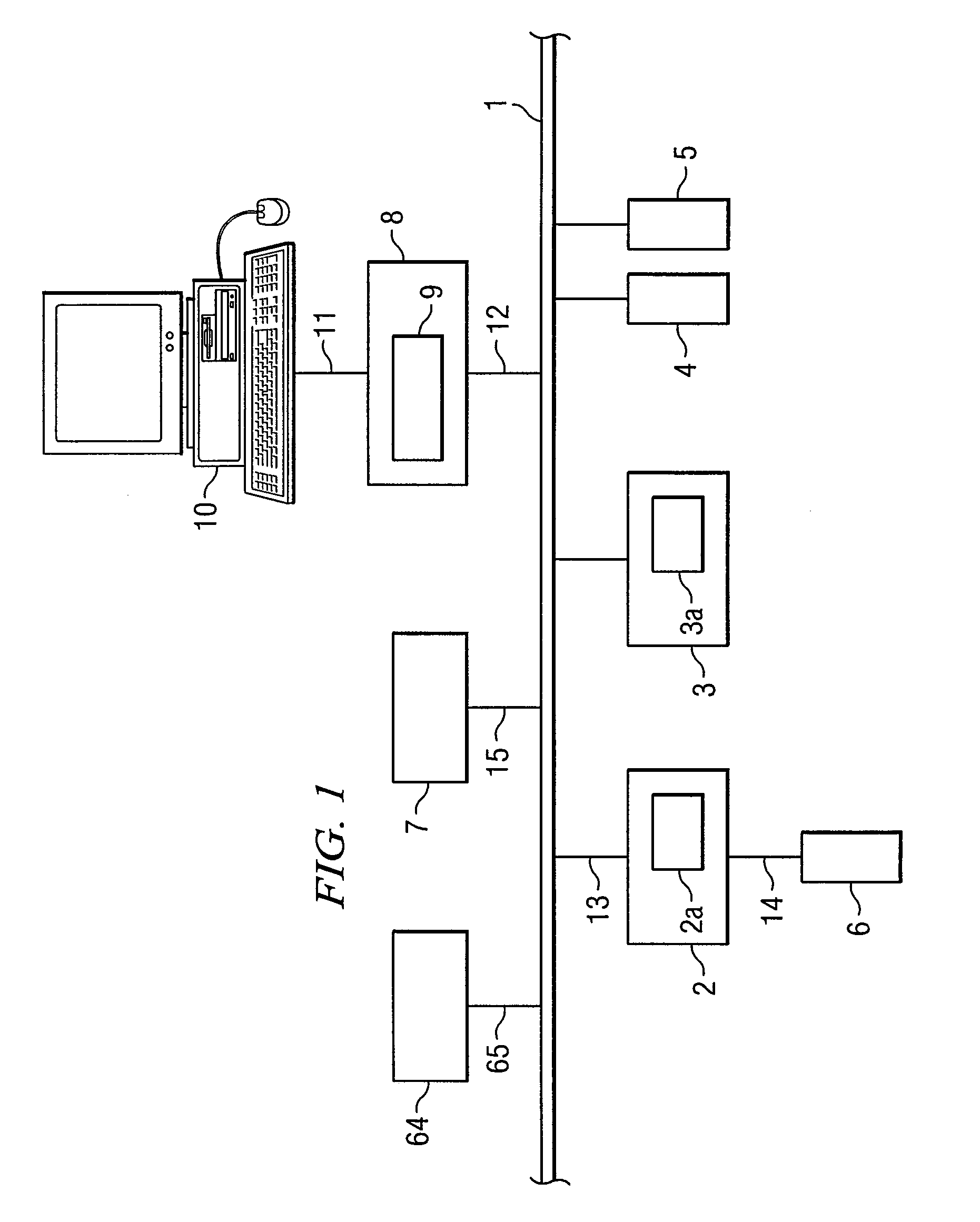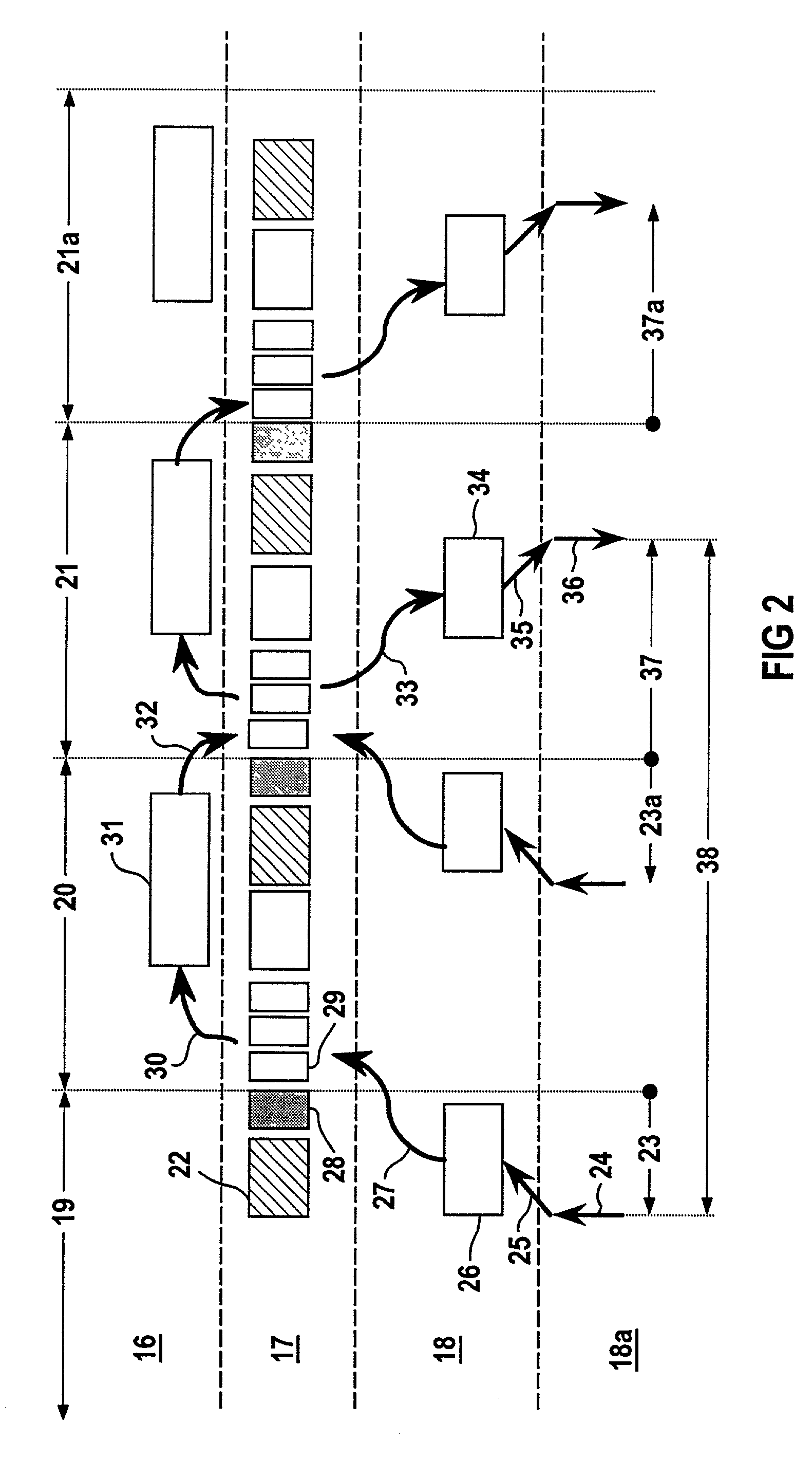Synchronous clocked communication system with decentralized input/output modules and method for linking decentralized input/output modules into such a system
a communication system and clocked communication technology, applied in data switching networks, program control, instruments, etc., can solve the problems of not being able to specify the switching of outputs with sufficiently great timing accuracy, and not being able to switch inputs and outputs of the decentralized, so as to achieve the maximum possible accuracy, minimum possible time, and maximum possible accuracy
- Summary
- Abstract
- Description
- Claims
- Application Information
AI Technical Summary
Benefits of technology
Problems solved by technology
Method used
Image
Examples
Embodiment Construction
[0025]FIG. 1 shows a diagrammatic representation of an exemplary embodiment of a synchronous, clocked communication system. The communication system shown is, at the same time a distributed automation system. In the text which follows, these two terms will be used synonymously. The exemplary embodiment shown consists of a number of stations which can be formed both as transmitter and as receiver, at the same time, and thus can transmit and receive both signals or data. All stations are connected directly or indirectly to the data network 1, not only by for example a bus system with and / or without real-time characteristics such as clock synchronization and equidistance such as, e.g. Ethernet, industrial Ethernet, field bus, professional field bus, FireWire or also internal PC bus systems (PCI) etc., but also by clocked data networks such as, for example, isochronous real-time Ethernet, via data lines. Only data lines 11, 12, 13, 14 and 15 have been shown for reasons of simplicity of ...
PUM
 Login to View More
Login to View More Abstract
Description
Claims
Application Information
 Login to View More
Login to View More - R&D
- Intellectual Property
- Life Sciences
- Materials
- Tech Scout
- Unparalleled Data Quality
- Higher Quality Content
- 60% Fewer Hallucinations
Browse by: Latest US Patents, China's latest patents, Technical Efficacy Thesaurus, Application Domain, Technology Topic, Popular Technical Reports.
© 2025 PatSnap. All rights reserved.Legal|Privacy policy|Modern Slavery Act Transparency Statement|Sitemap|About US| Contact US: help@patsnap.com



